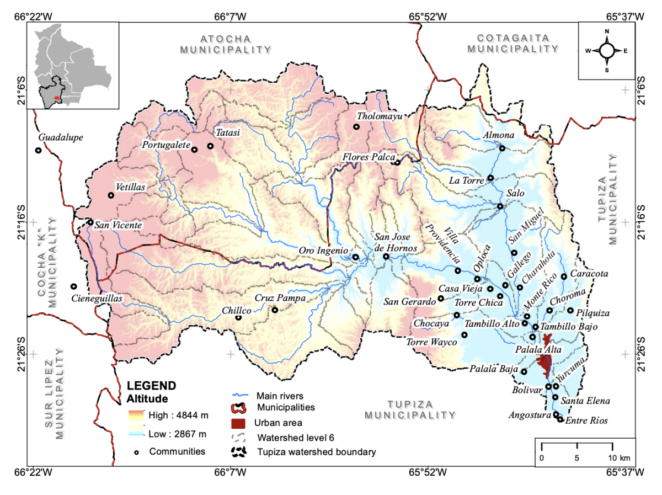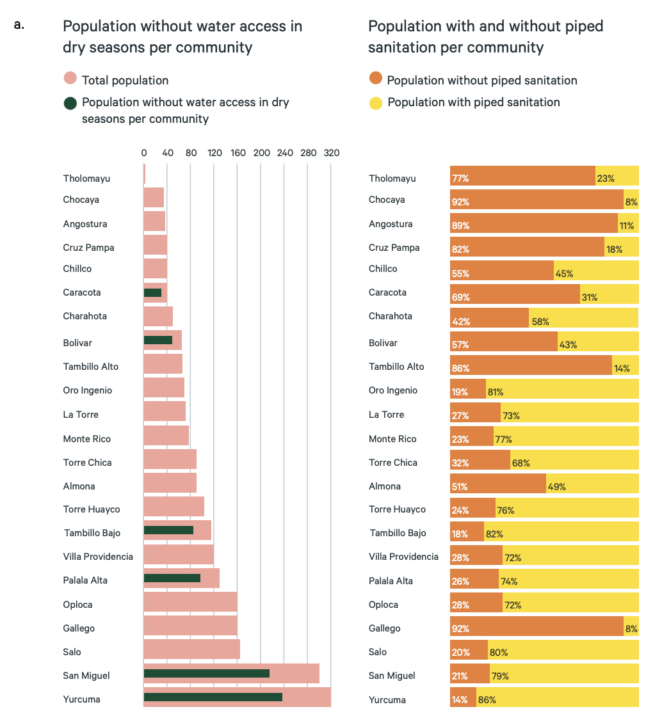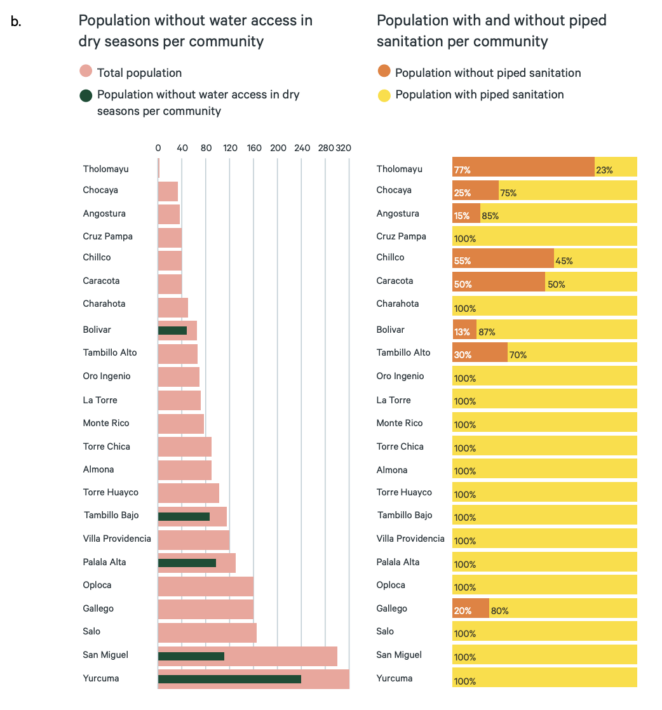Using WASH Flows in the in the development of the Tupiza watershed plan, Bolivia

This case study is part of the SEI Urban Toolbox for Liveable Cities whichhas been developed by theSEI Initiative on City Health and Wellbeing. The Urban Toolbox isa collection of tools, developed within SEI or in coordination with SEI,aimed at supporting planning and decision-making for improving the health, well-being and resilience of city residents and urban systems more broadly. It demonstrates how WASH Flows can be used to inform the development of watershed plans and water, sanitation and hygiene initiatives.
Introduction
The Tupiza watershed is situated in Bolivia, the country with Latin America’s highest rate of open defecation in rural areas and also suffers limited access to water and sanitation services. Located in the Potosi department, the watershed covers an area of 2,309 km2 with a population of about 47 000, distributed among 38 communities settled near the rivers and creeks.

*This Urban Toolbox case study is an abridged version of the original text, which can be downloaded from the right-hand column. Please access the original text for more detail, research purposes, full references, or to quote text. Please also note that currently,WASH Flows is under a beta version and is being tested as part of the Bolivia WATCH project to finalize a generic version of the tool that can be adapted to other regions.
Methodology
The WASH Flows model was implemented in the development of the Tupiza watershed plan using WASH data obtained from a survey of 312 households (conducted between January and February 2020)and supplemented with secondary sources to represent the conditions of WASH services.
WASH data included qualitative information about water source, WASH infrastructure and final disposal of wastewater at the household level. The data from the surveys was converted into quantitative information needed for the formulas designed to evaluate and define vulnerabilities in WASH services at community level.
WASH Flows includes graphs and a threshold evaluation that compares the baseline outputs towards national WASH service targets, however, to validate the results, the output was crosschecked with WASH service coverage percentages registered in the last national census for each community.
After the baseline was verified, the communities with low service levels were visited to gather information about topography, spatial location of existing WASH infrastructure, socio-economic aspects, among others. This data contributed to an evaluation of potential technical/engineering actions that can improve access, quality and /or coverage of WASH services. These potential actions were modeled in WASH-Flows where scenarios are created comparing WASH service levels before and after their potential implementation in the community.
The WASH Flows model in Tupiza generated outputs that identified the type of WASH service deficiencies present in the communities and allowed us to evaluate the impact of potential WASH solutions.
Key Findings
-
The analysis was coupled with the climatic data in WEAP’s Tupiza model, in turn identifying six communities where people lack water access during drought periods.
-
The WASH actions selected for projection in the watershed allow three communities to significantly reduce their water access vulnerability in drought circumstances, according to the analysed scenarios.
-
Similarly, the selected sanitation actions considerably reduce the number of people with no piped sanitation connections. In that sense, the actions selected for the Tupiza watershed not only can increase WASH coverage, but also enhance communities’ resilience.

Population without access to drinking water and piped sanitation per community in the Tupiza watershed using <strong>current WASH actions</strong>(see Figure 4, p.6) 
Population without access to drinking water and piped sanitation per community in the Tupiza watershed using <strong>proposed WASH actions</strong> (see Figure 4, p.6)
Outcomes of Applying the Tool
The application of WASH-Flows in Tupiza led to the identification of 3 drinking water and 3 sustainable sanitation actions to benefit 34 rural communities. These actions are included in the Watershed Master Plan of Tupiza, at a stage of pre-design, thus facilitating potential investment in the near future.
Suggested Citation:
Claure, P., Esquivel, N. N., Liera, C., Soto Trujillo, A., & Escobar, M. (2023).Introducing the WASH Flows analytical tool: Integrating sanitation and watershed management for improved water governance and investments. Stockholm Environment Institute. https://doi.org/10.51414/sei2023.009
(0) Comments
There is no content